|
View previous topic :: View next topic
|
|
| Author |
Message |
AfterHours
Gender: Male
Location: The Zone
- #191
- Posted: 12/16/2022 21:27
- Post subject:
|
@ EyeKanFly
The following isn't intended to "press" you to respond faster than you already are intending to, just to further explain or clarify my earlier post...
Just in case it wasn't clear in my disorganized tangents 🤡 🤣 I of course am not arguing that, say, the paint itself upon a wall (etc) is (alone) "architecture". I doubt I needed to say that, but just in case that wasn't clear.
The main challenge (with rating a "building" per an overall "artistic" rating as a work of visual art) arises when I am rating the "value/impact/depth" of the building, particularly where art like painting or mosaic (etc) is directly on that structure. For a facade, for instance, it would seem that one would of course count everything one sees (presumably) whether it be painting, mosaic, sculpted figures or door portals (etc). So the internal question I hit is: why not the interior structures too? Obviously the interiors count in general (and in many cases can even be more important to what the whole work is conveying) as they are basically just the "other side" of its outer structure and are no less "architecture" than the exterior. So where painting or mosaic (etc) has been added, and when pouring over its structure, part by part, this of course contributes directly to one's experience, is unavoidable "as" that wall (or other structure), the impact thereof, that part of its structure (whether wall, ceiling vault, etc) conveys where said art has been directly added to it. So it's tough to know when this sort of thing counts (or not). Does it have to part of the original structural, architectural conception and in alignment with its execution? If so, why wouldn't those added later count just like later developments and iterations of architectural count (that weren't part of the original plan, ex: Alhambra). Etc. Its very tough to decide and any opinions on this, particularly from someone like yourself who's more strictly focused on "architecture" alone, could be of value, whether I use what you say wholly or kind of combine it to find some sort of happy medium. I do know that I have my limits of what I would count. For instance Seville Cathedral has practically become an art gallery (which I actually find somewhat annoying in relation to how the Church should be seen, presented, experienced) and I probably wouldn't count most (perhaps none) of its displays that one finds practically lined around the Church these days, but where would I draw the line (surely the organic spaces/structures [that are inherently part of the plan, design, altar, etc] should count as "part of the artistry of the building?" Or should they actually be separated from "architecture"?). How much should or shouldn't count (not for Seville, but in general for mosaics, paintings on walls, vaults, etc) and what is the best way to define this in your opinion? Sculpture is a bit easier. Probably any sculpture that is part of the facade or interior building plan should count as part of its whole, but maybe not sculptures added later that were an individual piece or separately composed piece(s) made apart from the Church that were then included in the space (or something like this as criteria...). Anyway, any insight on this could assist in ratings of a number of my choices that remain more "rough" estimates until this is better determined, and determining such would help solidify (or to eventually get there after more evaluation, analysis was carried out). Almost all of those on my list feature issues of how to assess them along this line (don't even get me started on St. Peter's! 🤣 )
_________________
Best Classical
Best Films
Best Paintings
|
|
|
|
AfterHours
Gender: Male
Location: The Zone
|
AfterHours
Gender: Male
Location: The Zone
- #193
- Posted: 12/19/2022 10:33
- Post subject:
|
Buscheto (unknown birth-death date, flourished: 1063 - 1110)
Best Works:
8.1/10: Piazza dei Miracoli: Pisa Cathedral; Pisa Bapistery of St. John; Campinile; Camposanto Monumentale di Pisa (collectively: 1064 - 1464) [Architecture]
Piazza dei Miracoli: Pisa Cathedral - Buscheto (Architect, 1064 - 1092) and Rainaldo (Facade, circa 1100); Pisa Baptistery of St. John - Diotisalvi (1152 - 1353, Pulpit: Nicolas Pisano, 1255 - 1260); Campinile (aka, "Leaning Tower of Pisa", 1173 - 1372) - Diotisalvi, then Benenato (1233 - 1259), Guido Speziale (1260 - 1272), Giovanni di Simone (1272 - 1284), Tommaso di Andrea Pisano (Bell Chamber, 1372); Camposanto Monumentale di Pisa - Giovanni di Simone (1278 - 1284, completed posthumously, 1464) [Architecture]

Thumbnail. Click to enlarge.
EXTERIOR - PIAZZA DEI MIRACOLI - AERIAL VIEW: https://upload.wikimedia.org/wikipedia/commons/6/6b/Italy_-_Pisa_-_Leaning_Tower_of_Pisa.jpg
VIDEO - PISA CATHEDRAL - WALKING TOUR: https://www.youtube.com/watch?v=nwt7_7WbgQg
VIDEO - PISA BAPISTERY OF ST. JOHN - SEVERAL VIEWS - EXTERIOR AND INTERIOR: https://www.youtube.com/watch?v=iD_pxRhrMUE
VIDEO - CAMPINILE ("LEANING TOWER OF PISA") - SEVERAL VIEWS - EXTERIOR AND INTERIOR (note: includes some video of the Pisa Cathedral exterior/interior): https://www.youtube.com/watch?v=j7DiqmPT6Lk
VIDEO - CAMPOSANTO MONUMENTALE DI PISA - WALKING TOUR: https://www.youtube.com/watch?v=TpFQS-tpa-w
NOTE: More images/links to be added soon...
_________________
Best Classical
Best Films
Best Paintings
Last edited by AfterHours on 08/14/2025 03:27; edited 2 times in total
|
|
|
|
AfterHours
Gender: Male
Location: The Zone
- #194
- Posted: 12/20/2022 21:43
- Post subject:
|
Ulugh Beg (1394-1449); Yalangtoʻsh Bahodir (1578-1656)
Best Works:
8.5/10: Registan Square (1417-1420; circa 1618; 1646-1660) [Architecture]
Registan Square (Ulugh Beg, 1417-1420; Yalangtoʻsh Bahodir, circa 1618; 1646-1660) [Architecture]
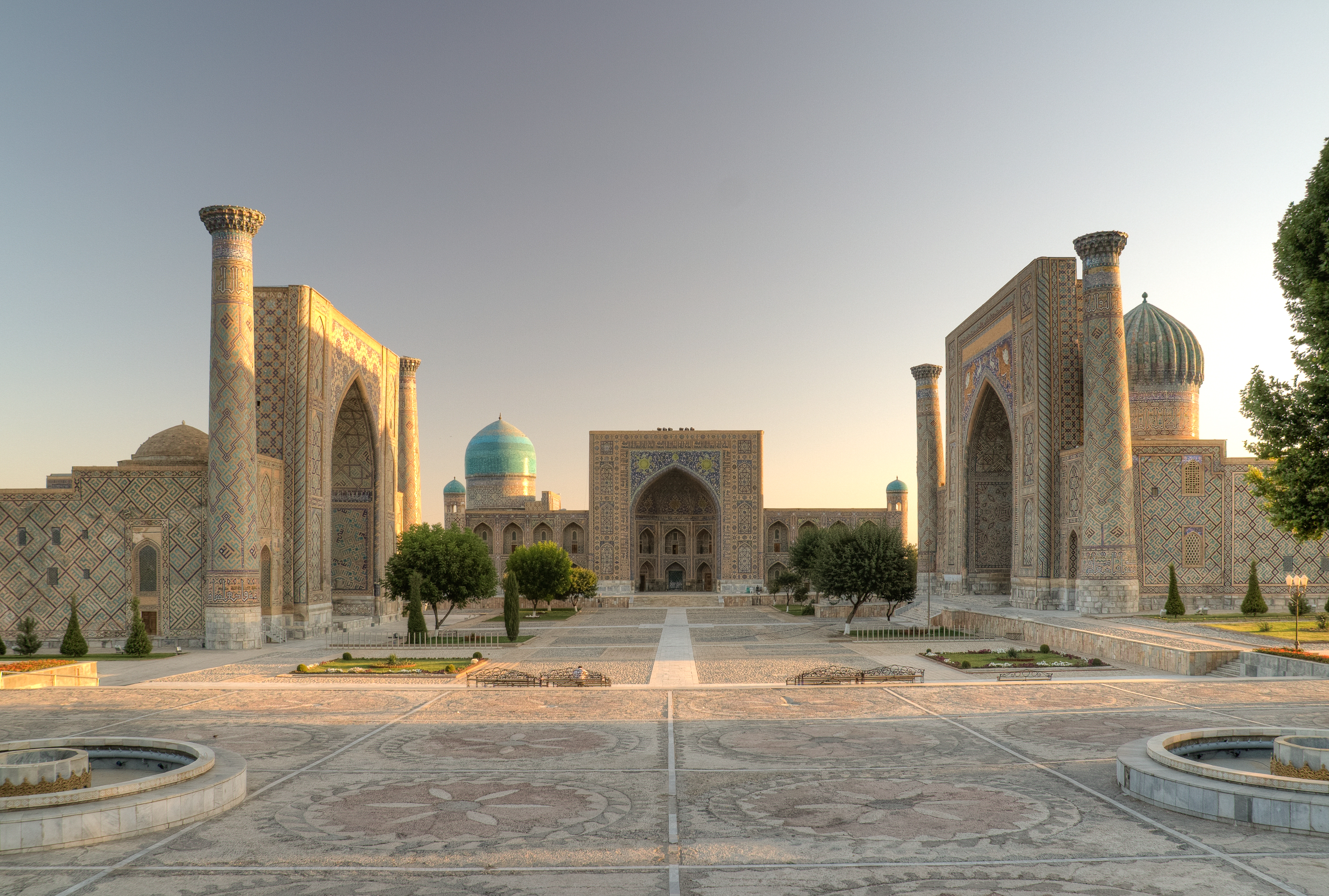
Thumbnail. Click to enlarge.
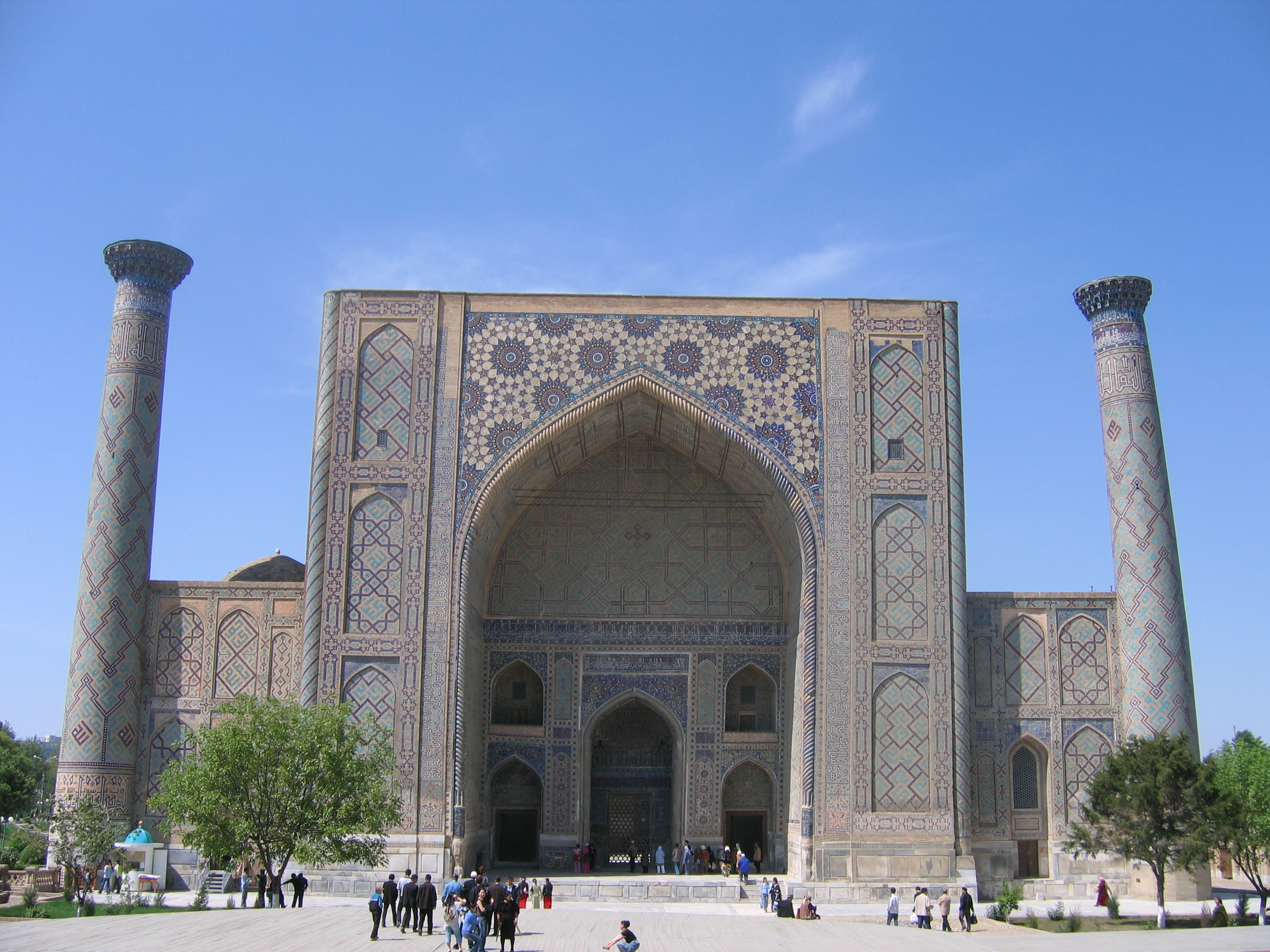
Thumbnail. Click to enlarge.

Thumbnail. Click to enlarge.

Thumbnail. Click to enlarge.

Thumbnail. Click to enlarge.

Thumbnail. Click to enlarge.

Thumbnail. Click to enlarge.

Thumbnail. Click to enlarge.

Thumbnail. Click to enlarge.

Thumbnail. Click to enlarge.

Thumbnail. Click to enlarge.
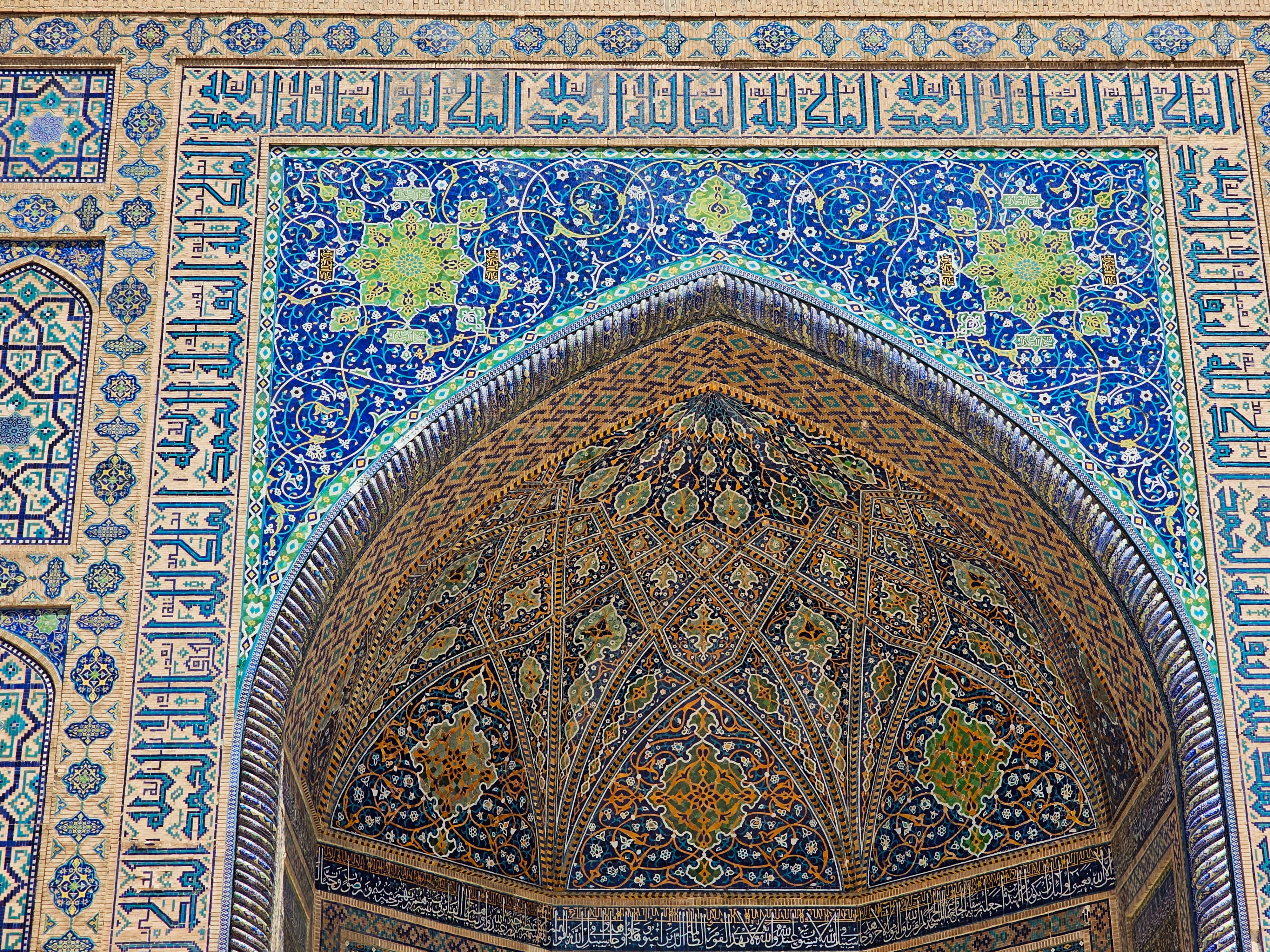
Thumbnail. Click to enlarge.

Thumbnail. Click to enlarge.

Thumbnail. Click to enlarge.

Thumbnail. Click to enlarge.

Thumbnail. Click to enlarge.
VIDEO: https://www.youtube.com/watch?v=1feAEm1EnSI
360 DEGREE PANORAMA: https://www.360cities.net/image/registan-samarkand
_________________
Best Classical
Best Films
Best Paintings
Last edited by AfterHours on 05/24/2025 18:01; edited 2 times in total
|
|
|
|
EyeKanFly
Head Bear Master/Galactic Emperor
Age: 34
Location: Gotham 
- #195
- Posted: 12/20/2022 21:55
- Post subject:
|
Sorry it took a few days for me to respond (Christmas shopping, World Cup, taking some time to digest), but I appreciate the responses and continuing questions. I think you raised a particularly interesting question which I've been struggling to grapple with myself. But first:
| AfterHours wrote: | | While the Lautner Sheats-Goldstein wouldn't be out of place with comparing to a more modern work, a rock or jazz album, something very angular and bracing, and rather colorful, like say... for example: Monk's Brilliant Corners of 1956 seems like a pretty good parallel (offhand) to me. |
Don't know if the pun was intentional, but that was... brilliant 🤣 . Great comparison in terms of content as well as literal terminology!
| AfterHours wrote: | | ...how to count other art works (sculpture, paintings in particular) within the "architecture rating". It is easier to decide when the space is clearly aligned to both as a single composition (like, for instance, Michelangelo's Medici Chapel: Sagrestia Nuova, where the sculpture and architecture is "one vision"). ... It gets much more confusing when, for instance, a Baroque sculptor plants their work in a Gothic cathedral altar hundreds of years later. Surely one can evaluate and rate that work of sculpture on its own, but does it now also count within the overall rating for the building??? ... |
Lots to think about here, and I appreciate the follow-up from Friday. Great examples, and I think I have a lot to say but my thoughts may not be completely put together, so I'll try to say what I can:
With all visual art, I think it's important to consider all of what you can see, and while there should be a boundary somewhere, it doesn't always need to be a strict boundary. For paintings, the easiest boundary is probably the end of the canvas (or... the visible edges of the canvas, not the part that wraps around the back and is obscured by a frame, you know what I mean). But even still, how one views a painting can be (subtly) improved or diminished by its surroundings. One's view of a painting may be improved by a suitable frame (probably subconsciously). One's view of a single painting in a "salon" setting may be diminished by being one of dozens of paintings hung side-by-side-by-side. One's view of the Sistene Chapel ceiling is likely improved by the awe of being on a ceiling, as well as being surrounded by similarly incredible artwork on the walls.
Context matters tremendously, though it can often be subconscious. I think with architecture, the context can be more obvious. But at the same time harder to distinguish the "work" from the surroundings. Especially if the surroundings are actually inside or attached to the "work". Would the Sydney Opera House be as incredible were it not right on the harbour? Would the Parthenon be as incredible were it not on top of the Acropolis hill in the middle of Athens? I'd argue no. Both would still be incredible, but not as incredible. Architecture has a tie to its environment in a way that painting and even sculpture do not. "Organic" architecture is a style in which the structure is intimately woven into the natural environment, but every building is influenced by (and influences) its surrounding environment.
I know we're not talking about the environment, but this gets to my point about things surrounding a building (inside and out): sculpture, paint (whether decorative or functional), landscaping, etc. I'd argue that everything inside and out of a building affects its visual appearance and style, but not everything should be considered entirely.
As a general rule, I try to differentiate between decorative architectural elements and purely decorative elements. A mosaic would be purely decorative, as would anything that's not fastened to the building. A statue at the steeple, a gargoyle, or a Corinthian column may be decorative architectural elements. When ranking a building, I try to avoid dwelling too much on the purely decorative elements, lest I verge too far into ranking the mosaic/painting/sculpture rather than the building. A great example is the Secession Building in Vienna: when ranking the building as a work of architecture, I consider the gold foliage dome and the sculpture elements by Koloman Moser since I'd consider those relevant to the architecture of the building. But even still, those elements may influence my ranking rather than determining it. And likewise, I generally would not consider interior artwork, so even the wonderful Beethoven Frieze by Gustav Klimt which is painted on the walls would not influence my ranking much, if at all.
That's easier said than done though. For example, it's very very hard not to consider Juan O'Gorman's incredible mosaic on the Central Library of the Ciudad Universitaria Campus of the National Autonomous University of Mexico (architects Mario Pani and Enrique del Moral). Ultimately this incredible mosaic is on the exterior of the building, and since it covers the whole building, it has a monumental effect on my ranking. Likewise, Frank Lloyd Wright's stained glass windows play a big effect on my rankings for his buildings.
My recommendation would be to do the same the other way around: e.g. the Sistene Chapel would be rated for the painting with some consideration for the architectural elements which enable the painting (i.e. the flow of the ceiling affects how one views the artwork) but NOT outside architectural elements.
I think another thing that's important to consider is whether a work of art "belongs" in the work of architecture. In the above examples: of course, the building and artwork were designed as one vision, often by one artist who did both the architecture and artwork. But in your example of the Seville Cathedral, there's a lot of exhibits that have been there added over the course of centuries (and I did visit there once and agree that it's too cluttered and the exhibits diminish that atmosphere of the architecture). That said, I don't think the haphazard (partial) conversion of the Seville Cathedral into exhibition/museum space really diminishes my view of the architecture. On the other hand (going back to the Sistene Chapel example), I can't imagine that the wonderful painting does anything to increase my view of the architecture. It's a fine building (and smartly designed), but it wasn't designed to be beautiful. I mean... exterior pic 1, exterior pic 2... it's fine but I'd never include the building on my ranking of world architecture. And while the Louvre is a wonderful building, I would also never venture to consider the building plus all artwork inside a singular work (not saying you were considering that, I'm taking another venture to the extreme 🤣 ).
Side note: non-art exterior paint on a building is a different story and I would 100% consider that. The colors (or lack thereof) a building is painted, or the color/texture of materials that clad the exterior, are often dictated by the architect and can be essential in the design. The monochrome paint with primary color accents is absolutely essential to the design of the Schröder House or the Eames House. Color, texture, and contrast add a lot to a work of architecture, just as they do to paintings and sculpture.
But for your purposes of ranking a painting against a music album against a film against a building (etc.), I don't think it would be too out of the question to rank a building plus the artwork inside as one "work" as long as it was all designed to one vision. The Secession Building I linked above is a great example of that, as would be some of Frank Lloyd Wright's buildings which incorporate his stained glass artwork and furniture designs, and sometimes even paintings (either by him or commissioned for the building). In many cases, the original artwork and furniture still exists and is in use in those buildings (I've read that Wright actually visited a client's house years after they'd been living there and re-arranged the furniture to match his original artistic intent! That's a bit extreme).
All that's to say that while examining a work of architecture, I consider the surrounding environment and the artwork on the interior, but I'm primarily concerned with the design of the structure.
_________________
51 Washington, D.C. albums!
|
|
|
|
AfterHours
Gender: Male
Location: The Zone
- #196
- Posted: 12/20/2022 21:55
- Post subject:
|
Gebre Meskel Lalibela (1162-1221)
Best Works:
8.3/10: Lalibela Rock-Hewn Churches Complex (circa 1181–1221 AD) [Sculpture/Architecture]
Lalibela Rock-Hewn Churches Complex [Sculpture/Architecture]
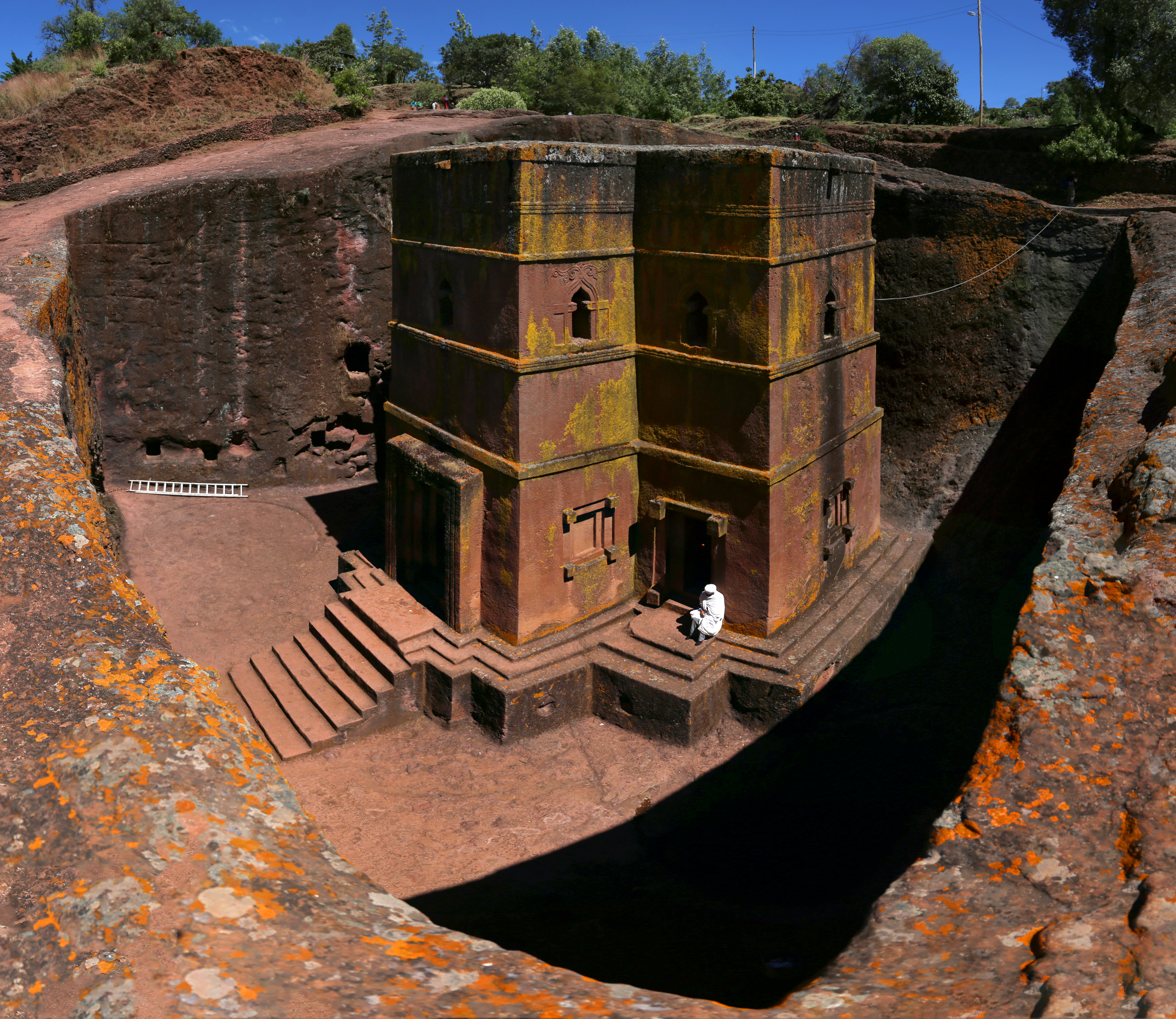
Thumbnail. Click to enlarge.

Thumbnail. Click to enlarge.

Thumbnail. Click to enlarge.

Thumbnail. Click to enlarge.

Thumbnail. Click to enlarge.

Thumbnail. Click to enlarge.
https://en.wikipedia.org/wiki/Rock-Hewn_Churches,_Lalibela#/media/File:Bete_Giyorgis_01.jpg
https://en.wikipedia.org/wiki/Rock-Hewn...rno_01.jpg
https://en.wikipedia.org/wiki/Rock-Hewn...02954).jpg
https://en.wikipedia.org/wiki/Rock-Hewn_Churches,_Lalibela#/media/File:Bete_Maryam_01.jpg
https://en.wikipedia.org/wiki/Rock-Hewn...o_08,0.jpg
https://en.wikipedia.org/wiki/Rock-Hewn_Churches,_Lalibela#/media/File:Bete_Mesqel.jpg
https://en.wikipedia.org/wiki/Rock-Hewn_Churches,_Lalibela#/media/File:Bete_Abba_Libanos.jpg
https://en.wikipedia.org/wiki/Rock-Hewn...o_01,0.jpg
https://en.wikipedia.org/wiki/Rock-Hewn...rno_05.jpg
https://en.wikipedia.org/wiki/Rock-Hewn...em,_01.jpg
https://en.wikipedia.org/wiki/Rock-Hewn_Churches,_Lalibela#/media/File:BietMercureosLalibela.JPG
DESCRIPTION, HISTORY, PHOTO GALLERY: https://whc.unesco.org/en/list/18/
PHOTO GALLERY: https://timelessethiopia.com/photo-gallery/lalibela
VIDEO: https://www.youtube.com/watch?v=HBq_zOzhTqw
VIDEO - TOUR PART 1: https://www.youtube.com/watch?v=74AimzsTj10&t=982s
VIDEO - TOUR PART 2: https://www.youtube.com/watch?v=F04VUAEHKgE
VIDEO - TOUR PART 3: https://www.youtube.com/watch?v=9pRwAJ60IzQ&t=852s
3D NAVIGATIONAL MODELS: https://www.zamaniproject.org/site-ethiopia-lalibela-rock-hewn-churches.html#next
PANORAMA TOUR: https://www.zamaniproject.org/tl_files/...Final.html
_________________
Best Classical
Best Films
Best Paintings
Last edited by AfterHours on 05/07/2025 21:39; edited 5 times in total
|
|
|
|
AfterHours
Gender: Male
Location: The Zone
- #197
- Posted: 12/20/2022 22:06
- Post subject:
|
Will Add Architect(s)...
Best Works:
NO RATING YET: Tikal National Park [Architecture]
Tikal National Park [Architecture]
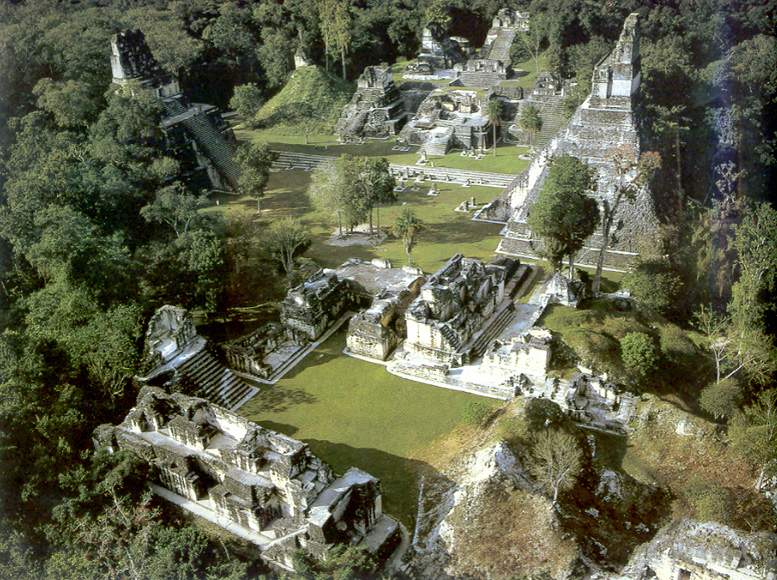
Thumbnail. Click to enlarge.
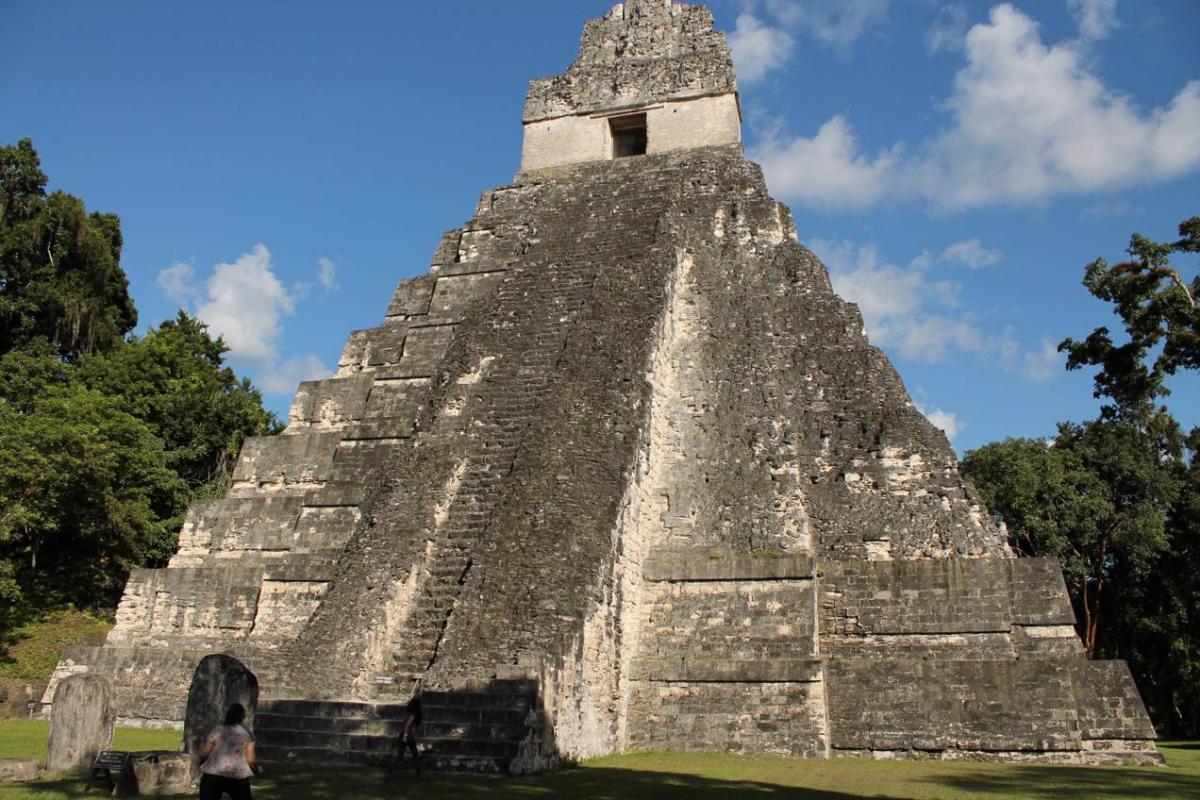
Thumbnail. Click to enlarge.

Thumbnail. Click to enlarge.
IMAGE GALLERY: https://whc.unesco.org/en/list/64/gallery/&index=1&maxrows=12
VIRTUAL TOUR - VERY HIGH QUALITY: https://commondatastorage.googleapis.com/virtualtours/inguat/peten/index.html
(NOTE: you will need to scroll to the correct entry as the link initially arrives at multiple options for different virtual tours)
NOTE: I am undecided if or how I want to add this work yet. It is a HUGE complex, composed/overseen by more than one ruler/architect, and it is hard to know how to count it or rate it (as a whole or broken up into smaller parts). For now, I am just highlighting it (including the very impressive image quality of the virtual tour above) and may or may not add it, rate/rank it at a later time perhaps after I've absorbed it in a bit more detail and come to a better conclusion
NOTE: More info, images/links to be added...
_________________
Best Classical
Best Films
Best Paintings
|
|
|
|
AfterHours
Gender: Male
Location: The Zone
|
AfterHours
Gender: Male
Location: The Zone
- #199
- Posted: 12/24/2022 07:25
- Post subject:
|
| EyeKanFly wrote: | Sorry it took a few days for me to respond (Christmas shopping, World Cup, taking some time to digest), but I appreciate the responses and continuing questions. I think you raised a particularly interesting question which I've been struggling to grapple with myself. But first:
Don't know if the pun was intentional, but that was... brilliant 🤣 . Great comparison in terms of content as well as literal terminology! |
It's all good, I've been similarly swamped by similar things. The pun was definitely noticed as I replied, but alas, would've been the same selection regardless, as the first to come to mind, so it was just kind of a perfect little storm 🤣
| EyeKanFly wrote: |
Lots to think about here, and I appreciate the follow-up from Friday. Great examples, and I think I have a lot to say but my thoughts may not be completely put together, so I'll try to say what I can:
With all visual art, I think it's important to consider all of what you can see, and while there should be a boundary somewhere, it doesn't always need to be a strict boundary. For paintings, the easiest boundary is probably the end of the canvas (or... the visible edges of the canvas, not the part that wraps around the back and is obscured by a frame, you know what I mean). But even still, how one views a painting can be (subtly) improved or diminished by its surroundings. One's view of a painting may be improved by a suitable frame (probably subconsciously). One's view of a single painting in a "salon" setting may be diminished by being one of dozens of paintings hung side-by-side-by-side. One's view of the Sistene Chapel ceiling is likely improved by the awe of being on a ceiling, as well as being surrounded by similarly incredible artwork on the walls.
Context matters tremendously, though it can often be subconscious. I think with architecture, the context can be more obvious. But at the same time harder to distinguish the "work" from the surroundings. Especially if the surroundings are actually inside or attached to the "work". Would the Sydney Opera House be as incredible were it not right on the harbour? Would the Parthenon be as incredible were it not on top of the Acropolis hill in the middle of Athens? I'd argue no. Both would still be incredible, but not as incredible. Architecture has a tie to its environment in a way that painting and even sculpture do not. "Organic" architecture is a style in which the structure is intimately woven into the natural environment, but every building is influenced by (and influences) its surrounding environment. |
I agree with the premise. The main thing I would reinforce is that it was (at least but perhaps even more than their settings) the primary artist(s) involved that made those works extraordinary (that used the setting or environment in genius ways to enhance their work). Michelangelo completely changed the Pope's initial request to have a star covered ceiling with a set of apostles lining it, and the eventual result was a composition so extraordinary and complex that it changed the course of art history forever. True, a "ceiling" is a perfect station for an awe-inspired look up to God and the genesis cycle and all that accompanies the work, but it would not have been so (ceiling or not) had it been reduced to the original plan of the Pope. We are lucky Michelangelo was (with Leonardo, to a lesser extent) pretty much the first artist to demand (as close to possible in those days) "independence of vision" (regardless of the patron or authority) and managed to command enough respect that Pope's and other higher ups repeatedly allowed him to get away with what would be considered quite disrespectful and carry harsh consequences for pretty much anyone else. Imo, Utzon uses the Sydney Opera house as an abstracted/expressionist allusion to ships and their sails (I would also add "musical undulations, wavelengths", perhaps even the flow or waves of water, and even, I would argue, the abstracted emotional expression of the human voice or choir singing opera or other belting, emotive vocals). In other words, I feel he is fusing the Opera House, its purpose and the surrounding environment into a unified, whole, vision. And its harbor setting to protrude out into the water as "one of the ships" itself (and also, perhaps acknowledging or greeting the other ships by not just the solidarity of its nautical imagery but also the sense that the building is "singing" out to them). If it was just a flat-ish rectangular building the harbor setting would only provide a great view but would hardly matter much as it does with Utzon's visionary masterpiece.
(Note: above I am not referring to "abstract expressionism" as the art genre particularly -- maybe only vaguely? -- but what I am really referring to is the architecture conveying both expressionist and abstraction more or less equally, hence abstract/expressionist)
I don't have much to add about The Parthenon.
So in the end, I agree with you that setting can surely influence the quality or interpretation but I just think it goes both ways (at least equally).
| EyeKanFly wrote: |
I know we're not talking about the environment, but this gets to my point about things surrounding a building (inside and out): sculpture, paint (whether decorative or functional), landscaping, etc. I'd argue that everything inside and out of a building affects its visual appearance and style, but not everything should be considered entirely.
As a general rule, I try to differentiate between decorative architectural elements and purely decorative elements. A mosaic would be purely decorative, as would anything that's not fastened to the building. A statue at the steeple, a gargoyle, or a Corinthian column may be decorative architectural elements. When ranking a building, I try to avoid dwelling too much on the purely decorative elements, lest I verge too far into ranking the mosaic/painting/sculpture rather than the building. A great example is the Secession Building in Vienna: when ranking the building as a work of architecture, I consider the gold foliage dome and the sculpture elements by Koloman Moser since I'd consider those relevant to the architecture of the building. But even still, those elements may influence my ranking rather than determining it. And likewise, I generally would not consider interior artwork, so even the wonderful Beethoven Frieze by Gustav Klimt which is painted on the walls would not influence my ranking much, if at all.
That's easier said than done though. For example, it's very very hard not to consider Juan O'Gorman's incredible mosaic on the Central Library of the Ciudad Universitaria Campus of the National Autonomous University of Mexico (architects Mario Pani and Enrique del Moral). Ultimately this incredible mosaic is on the exterior of the building, and since it covers the whole building, it has a monumental effect on my ranking. Likewise, Frank Lloyd Wright's stained glass windows play a big effect on my rankings for his buildings.
My recommendation would be to do the same the other way around: e.g. the Sistene Chapel would be rated for the painting with some consideration for the architectural elements which enable the painting (i.e. the flow of the ceiling affects how one views the artwork) but NOT outside architectural elements.
I think another thing that's important to consider is whether a work of art "belongs" in the work of architecture. In the above examples: of course, the building and artwork were designed as one vision, often by one artist who did both the architecture and artwork. But in your example of the Seville Cathedral, there's a lot of exhibits that have been there added over the course of centuries (and I did visit there once and agree that it's too cluttered and the exhibits diminish that atmosphere of the architecture). That said, I don't think the haphazard (partial) conversion of the Seville Cathedral into exhibition/museum space really diminishes my view of the architecture. On the other hand (going back to the Sistene Chapel example), I can't imagine that the wonderful painting does anything to increase my view of the architecture. It's a fine building (and smartly designed), but it wasn't designed to be beautiful. I mean... exterior pic 1, exterior pic 2... it's fine but I'd never include the building on my ranking of world architecture. And while the Louvre is a wonderful building, I would also never venture to consider the building plus all artwork inside a singular work (not saying you were considering that, I'm taking another venture to the extreme 🤣 ). |
Pretty sure I agree with you on all of this, and it will probably influence how I eventually determine what to rate and what to not as part of the overall rating. Though I may still count mosaic or painting particularly if it was concurrent to the architectural planning and building. Like if I'm remembering correctly, the Monreale Cathedral's mosaics may apply, as it seems that the architecture and the mosaics would not have been made the way they were and I believe they were in accordance with each other (I'll have to double check that claim) -- to support mosaics along its walls and interior dome, etc -- So there may be a fine line in which these would coexist and count, though I am still thinking it through. I don't think the same issue would present itself with the Sistine for instance, as (for example) Michelangelo's ceiling was some 25-30 years after the chapel's inception, and beyond that was clearly a very independently conceived and executed vision (despite following a plan -- in a very general way -- that was begun by the earlier paintings in the Chapel, and completed by the addition of the Last Judgment). Just thinking aloud ... may still change my mind...
| EyeKanFly wrote: |
Side note: non-art exterior paint on a building is a different story and I would 100% consider that. The colors (or lack thereof) a building is painted, or the color/texture of materials that clad the exterior, are often dictated by the architect and can be essential in the design. The monochrome paint with primary color accents is absolutely essential to the design of the Schröder House or the Eames House. Color, texture, and contrast add a lot to a work of architecture, just as they do to paintings and sculpture.
But for your purposes of ranking a painting against a music album against a film against a building (etc.), I don't think it would be too out of the question to rank a building plus the artwork inside as one "work" as long as it was all designed to one vision. The Secession Building I linked above is a great example of that, as would be some of Frank Lloyd Wright's buildings which incorporate his stained glass artwork and furniture designs, and sometimes even paintings (either by him or commissioned for the building). In many cases, the original artwork and furniture still exists and is in use in those buildings (I've read that Wright actually visited a client's house years after they'd been living there and re-arranged the furniture to match his original artistic intent! That's a bit extreme).
All that's to say that while examining a work of architecture, I consider the surrounding environment and the artwork on the interior, but I'm primarily concerned with the design of the structure. |
Definitely agree on the exteriors. It does seem like this may often apply (similarly, if not completely, and discounting future updates/modifications) to interiors too, unless I'm mistaken 🤔
Thanks EKF for all of your replies. I do agree that the "designed as one vision" will be the key point to look out for the criteria for this is shaped a bit more precisely.
_________________
Best Classical
Best Films
Best Paintings
|
|
|
|
AfterHours
Gender: Male
Location: The Zone
- #200
- Posted: 05/31/2024 00:26
- Post subject:
|
Suryavarman II (circa 11th century - 1150 AD)
Best Works:
9.0/10: Angkor Wat (circa 1122 - 1150; Note: there are various anomalies that may suggest an earlier date of construction -- perhaps even much earlier) [Architecture and Sculpture]
Angkor Wat - Started by Suryavarman II; Completed by Jayavarman VII (circa 1122 - 1150; Note: there are various anomalies that may suggest an earlier date of construction -- perhaps even much earlier) / Siem Reap, Cambodia [Architecture and Sculpture]

Thumbnail. Click to enlarge.

Thumbnail. Click to enlarge.
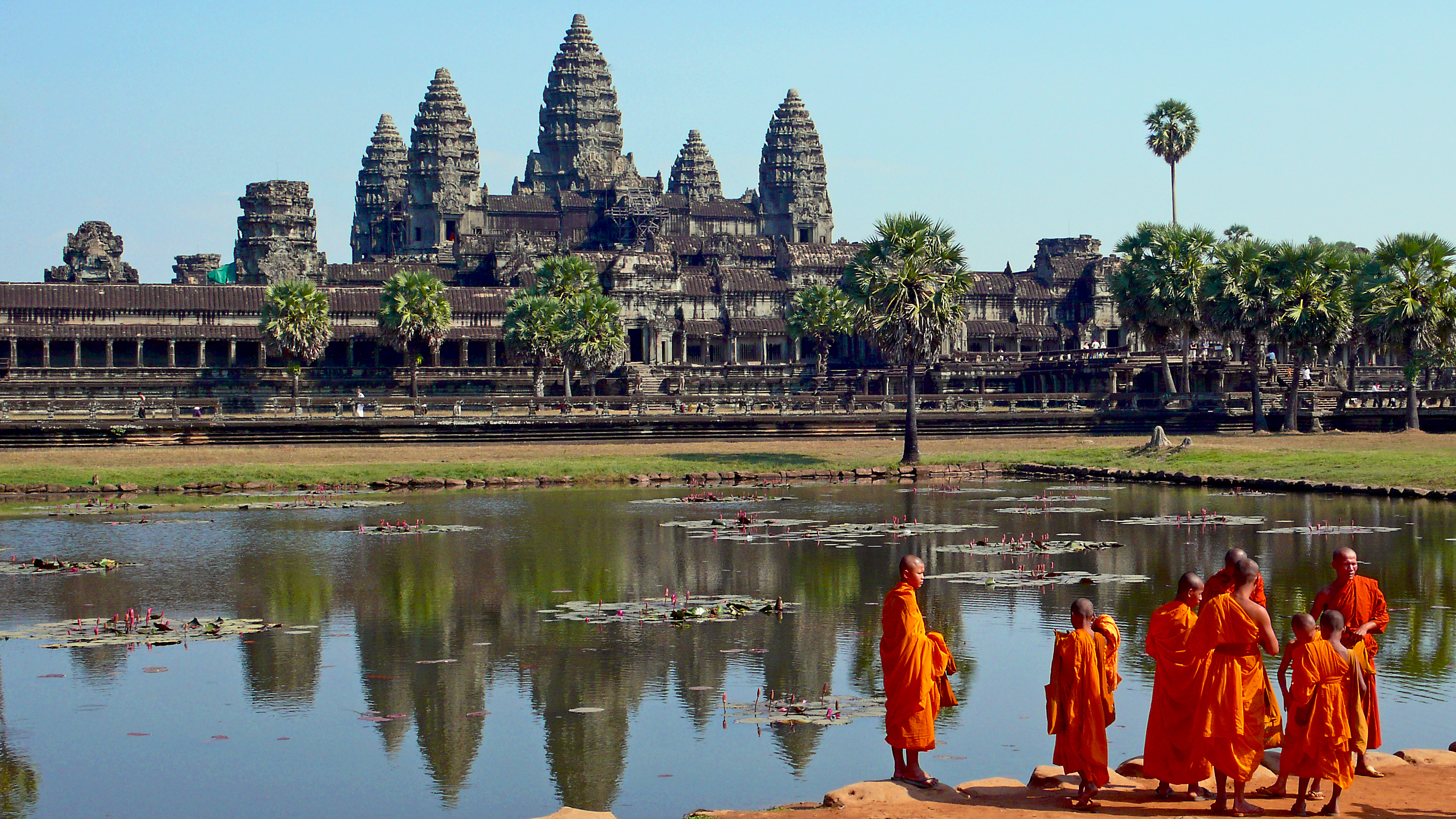
Thumbnail. Click to enlarge.
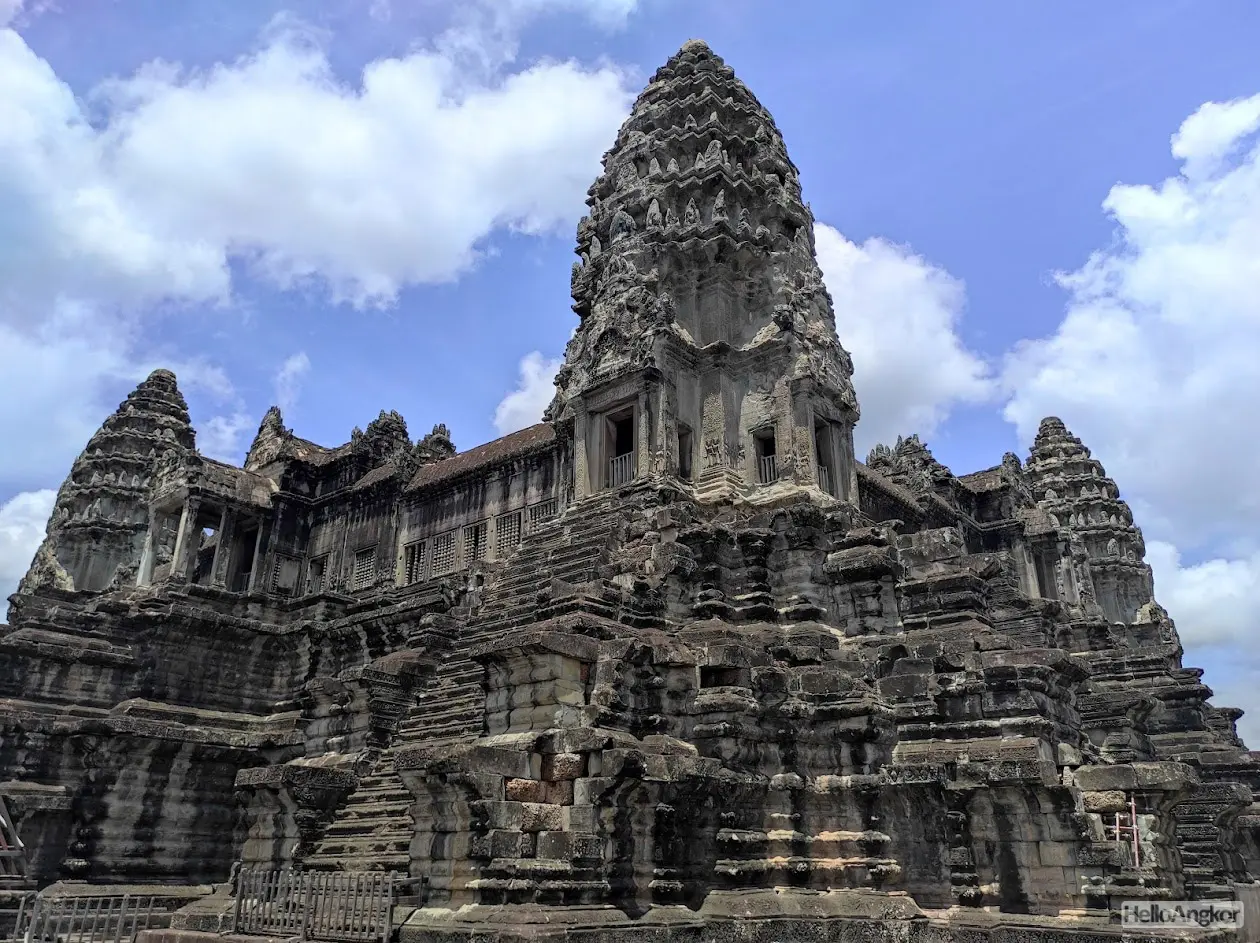
Thumbnail. Click to enlarge.
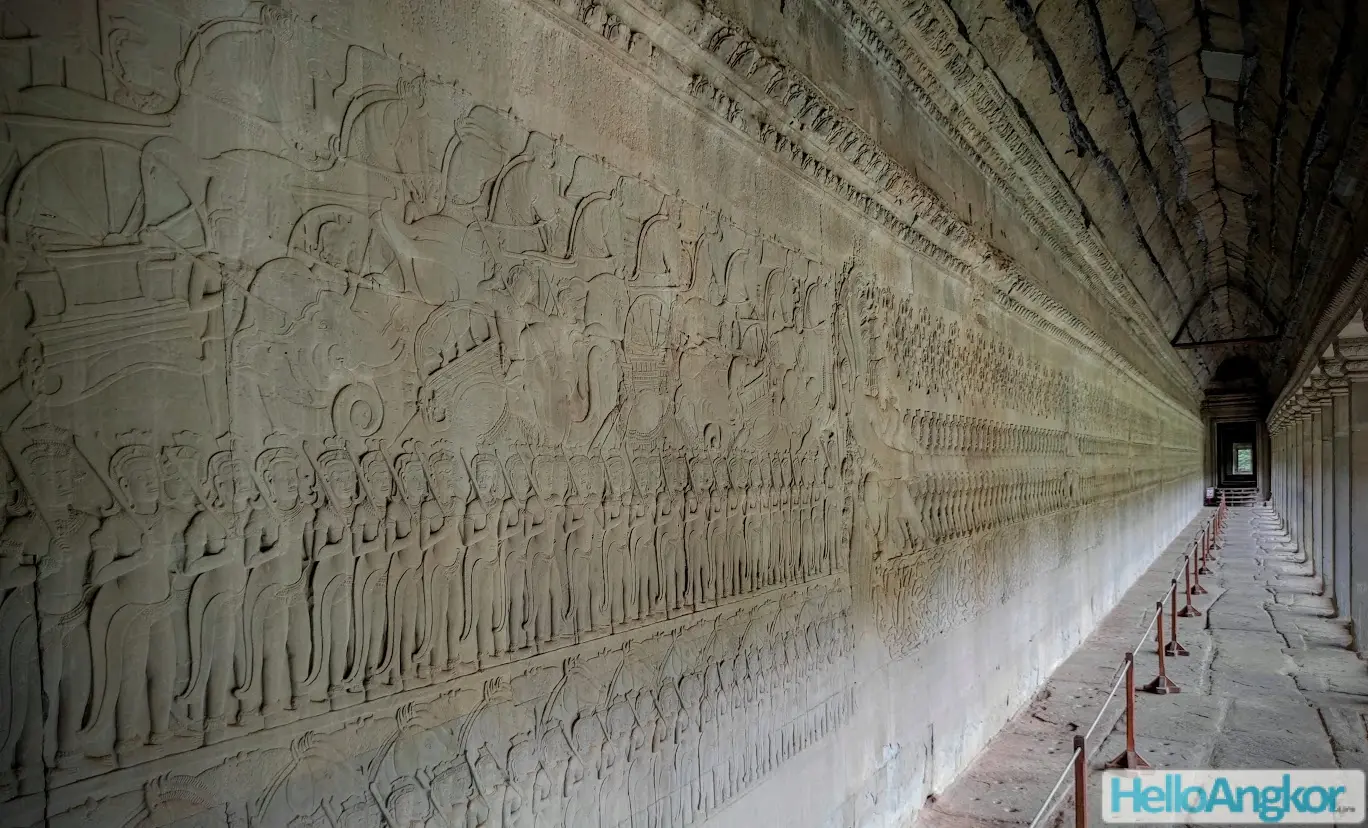
Thumbnail. Click to enlarge.

Thumbnail. Click to enlarge.

Thumbnail. Click to enlarge.
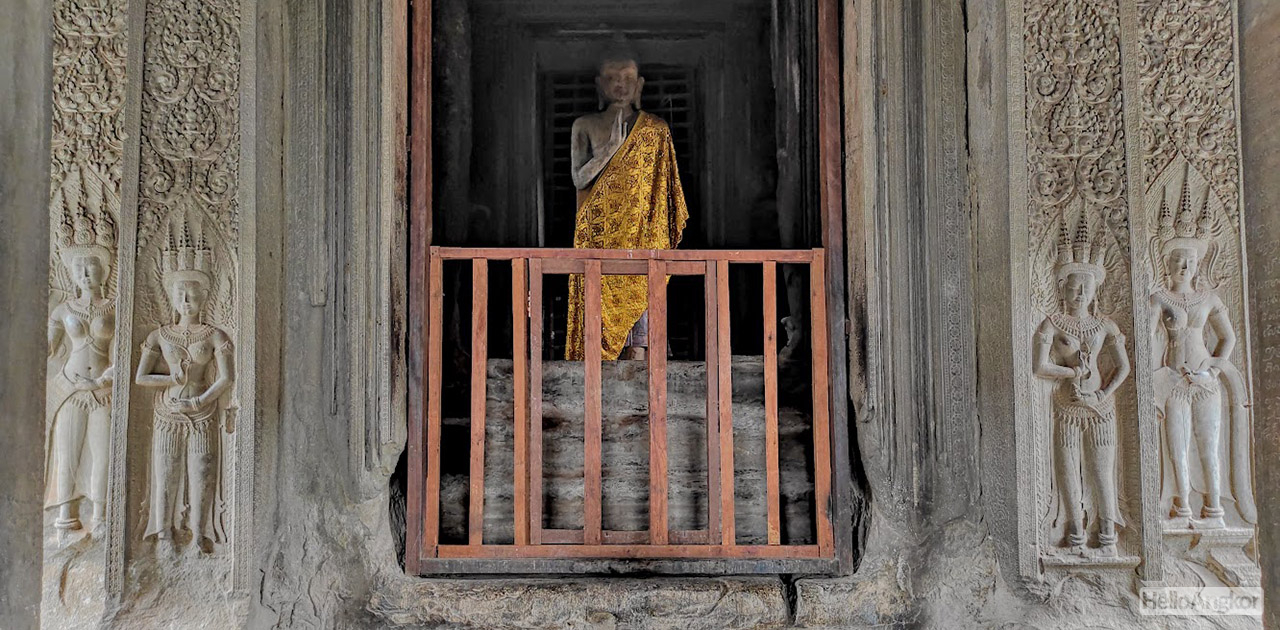
Thumbnail. Click to enlarge.
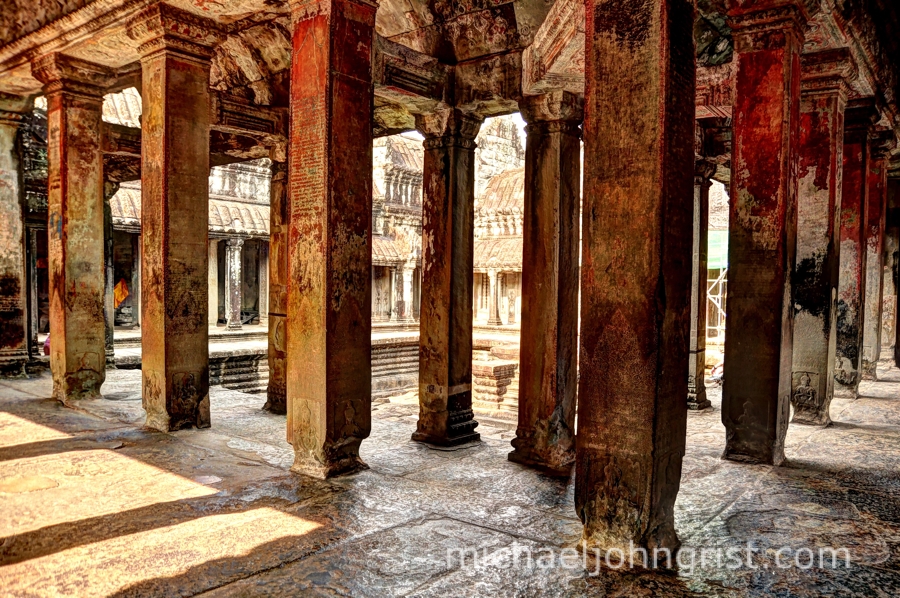
Thumbnail. Click to enlarge.
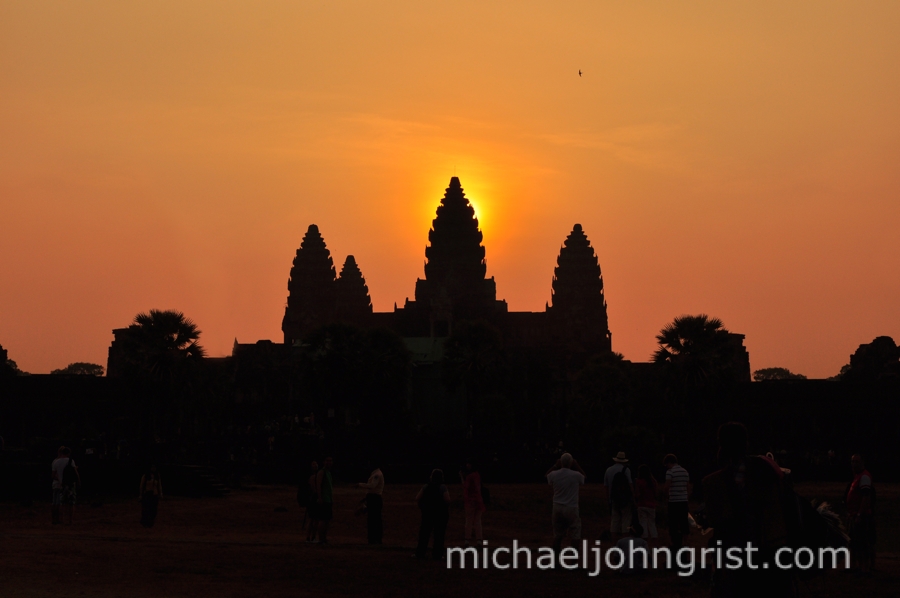
Thumbnail. Click to enlarge.

Thumbnail. Click to enlarge.
HISTORY, THEMES, STRUCTURAL DETAILS, PHOTO GALLERY: https://en.namu.wiki/w/%EC%95%99%EC%BD%94%EB%A5%B4%20%EC%99%80%ED%8A%B8
GUIDE, PHOTO GALLERY: https://helloangkor.com/attractions/angkor-wat/
WALKING TOUR - HIGH QUALITY: https://www.youtube.com/watch?v=ZbV2N0Nitgw
VIDEO PLAYLIST - INSIGHTS/DISCOVERIES/MYSTERIES/ANOMALIES/QUESTIONS: https://www.youtube.com/watch?v=wO5rowQ4dzw&list=PLxcxfvUxdiDRGDHRuSawJXVVIUjgVB8xI
BRIEF INFORMATIONAL VIDEO - MOAT/ENGINEERING: https://www.youtube.com/watch?v=gISEEOmabFQ
ROUGH DRAFT / UNDER CONSTRUCTION
Some brief analysis and points about Angkor Wat (WILL BE UPDATED, BETTER DETAILED/EXPLAINED -- INCLUDING MORE PICS AND LINKS -- AT A LATER TIME)
Largest religious structure in the world
Angkor Wat is a unique combination of the temple mountain (the standard design for the empire's state temples) and the later plan of concentric galleries, most of which were originally derived from religious beliefs of Hinduism. The construction of Angkor Wat suggests that there was a celestial significance with certain features of the temple. This is observed in the temple's east–west orientation, and lines of sight from terraces within the temple that show specific towers to be at the precise location of the solstice at sunrise. The Angkor Wat temple's main tower aligns with the morning sun of the spring equinox. The temple is a representation of Mount Meru, the home of the gods according to Hindu mythology: the central quincunx of towers symbolise the five peaks of the mountain, and the walls and moat symbolise the surrounding mountain ranges and ocean. Access to the upper areas of the temple was progressively more exclusive, with the laity being admitted only to the lowest level.
Unlike most Khmer temples, Angkor Wat is oriented to the west rather than the east. This has led scholars including Maurice Glaize and George Coedès to hypothesize that Suryavarman intended it to serve as his funerary temple. Further evidence for this view is provided by the bas-reliefs, which proceed in a counter-clockwise direction—prasavya in Hindu terminology—as this is the reverse of the normal order. Rituals take place in reverse order during Brahminic funeral services. (Wiki)
It is a masterpiece of (apparent) simplicity and harmony on an (extremely) grand scale that yet becomes increasingly complex and "cacophonous" (on an overwhelming scale) the closer one gets and the deeper one traverses or looks.
On one hand the main layout and overall design of it is not especially complex: very symmetrical, in increasing gradation through its squared echelons and perimeter/cornered and central towers.
Yet as one gets closer to these they overwhelm with their strange design, splitting and to the sides and re-forming in unusual geometric formations to reach their peaks. They also become increasingly "cacophonous" (while retaining, a now more "noisy" harmony, a bringing together of unusual complexity).
The corridors also, from the distance, apparently simply rectangular cooridors. Yet as one nears or goes through them, they are overtaken by endless false doors.
As well, the exterior of each section of this monumental work. At first, seemingly "simple" central or symmetrically located stairways lead one into and up to the next echelon. Yet even these are visually blurred, confused, merged, by walls that are also gradation or step-like "ledges"/"stairways".
Furthermore, in one of the most monumental artistic achievements in human history, virtually ever external surface is (or once was) sculpted or carved with designs or stories or characters or messages. So then again, from a distance these are "blocks" or "parts" of a structure. Up close they are intricate, overwhelming in their detail and symbology and complexity of message, literally covering the entire structure (or once did, many have been ruined by later attempts to change the meaning of the temple from "Hindu" to "Buddhist"; but many still remain left to express this).
Also, as one makes ones way through the whole structure (meaning from the same ground levels its originators were privy to) it is precisely structured so that each echelon is only discover-able (emerges to the eye) after the fact of traversing the last. So, again, the whole work unfolds in greater complexity and mystery precisely as one traverses it.
There is much more to be said, but these are some interesting expressive points about it that may not be obvious to the casual viewer so perhaps are helpful to get one into what makes it such a masterpiece (but I haven't even mentioned many of its anomalies and mysteries, or the moat or the complex agricultural system it seems to have powered in its day through the "electricity" of sunlight beaming down into it, or or or...).
PIERO SCARUFFI:
Angkor Wat, Cambodia
Angkor was the capital of the Khmer empire from the 9th to the 12th centuries ("angkor" actually simply means "capital"). Today the archeological site covers about 400 square kilometers. King Suryavarman II (in the early 12th century) had this temple ("wat") erected in it. Originally dedicated to Vishnu, the temple was meant to represent Mt Meru, the cosmological center of Hinduism. Three rectangular galleries encircle five towers that represent the five peaks of Mt Meru. These galleries are decorated with bas-relief friezes that represent lotus fowers, female and male dancers, episodes from the Hindu epics (the "Ramayana" and the "Mahabharata"), and a famous battle between asuras and devas (in Hindu mythology the asuras/demons are opposed to the devas/angels). Unusually for Angkorian temples, Angkor Wat faces west. Hindu temples in India are an experience of sensory overload. Angkor Wat, on the other hand, expresses a sense of harmony and elegance that is more Greek in nature while retaining the spiritual magniloquence of the southern Indian temple.
__________
PIERO SCARUFFI:
ANGKOR WAT
Angkorian period
Style of Angkor Wat (c.1 100-1175)
Built by: King Suriyavarman Il (1113-1150)
It is worth walking right round the temple in order to appreciate its massive size; also, in order to see it in different kinds of light, to watch it changing color and even, it seems, shape, as the light plays on it. This magnificent example of classical Khmer architecture combines Indian and Indochinese culture and the accumulated experience of centuries in one of the world’s most beautiful monu- ments.
At the height of his power, Suriyavar- man II, one of the most important of the Khmer kings, ordered the gigantic con- struction to be started from all four sides at once, so that, by a miracle of planning, it was completed in less than 40 years by numberless laborers, master builders and stonemasons. The king actually lived to see it finished.
Temple or mausoleum? Historians do not agree as to why Ang- kor was built, although there is no disput- ing that its purpose was a sacred one. Even the god-kings of the Khmer built their palaces of wood and roofed them with straw or tiles. Stone was only used for buildings intended as places for wor- shipping the gods and deified rulers.
The main entrance of a typical Khmer temple, as in most oriental shrines, faces €ast to the rising sun. However, the en- trance of Angkor Wat faces west, the same way as the temples of the dead.
There are known geographical reasons why exceptions are made when it comes to the eastward orientation. And such rea- sons can be found at Angkor — for instance the fact that it is bounded to the east by the Siem Reap river, or that it was located in the middle of what was then the capital city. But there are also clues that suggest it may have been intended as a mauso- leum, a place where the king would have been venerated after his death. Angkor was dedicated to the god Vishnu, and Su- riyavarman II was a devotee of Vishnu. No images of gods have been found in the temple; on the other hand, some scho- lars believe they have evidence that the king’s ashes rested here. Moreover, the god-kings had been erecting mausoleums for their own posthumous veneration and that of their ancestors, since the 9th cen- tury. A further clue is a scene on a panel depicting a kind of “Last Judgement.” A relief showing the king at the head of his troops also points to posthumous wor- ship. Another piece of evidence that Ang- kor was built as a royal mausoleum, and one that is difficult to refute, is the fact that in order to understand the narrative sequence depicted in the reliefs, it is necessary to walk round the temple anti- clockwise, with the reliefs on one’s left. This corresponds to the ritual of the dead, whereas, in the orient, temples to the gods must be walked round clockwise. Architecture and symbolism Masonry steps lead to the wide moat that surrounds the temple compound. It forms a rectangle, nearly a mile (1.5 km) long from east to west and over 3/4 mile (1.3 km) from north to south. The moat 1s linked to the Siem Reap river by a canal and was fed by it, as were the reservoirs serving the town, palace and paddy- fields. The temple-hill within the moat is the Khmer interpretation of the meru, the Hindu mountain of the gods, surrounded by the world-ocean.
Between the moat and the laterite stone wall, 3,200 ft by 2,800 ft (1 km by 0.8 km), which surrounds the temple area, a broad footpath runs round the whole site.
Angkor is inaccessible from the north and south, as there is no way over the moat. To the east, however, it is crossed by an earth causeway which is passable in the dry season and may have been used for the delivery of building materials and supplies to the temple city. To the south, east and north, the laterite wall is punctuated by beautifully decorated entrance pavilions on a cruciform ground-plan, which were linked by paths to the main temple.
The single causeway from the west, 720 ft (220 m) long, is paved with large, irregular sandstone slabs, and leads to the turreted main entrance. Only remnants are left of the columns and the naga ba- lustrade of the causeway. Stone steps lead to the turreted main and side portals with their large vestibules. The turrets are damaged, but one can visualize their for- mer elegance, which gives a foretaste of the temple facade.
From the entrance, colonnades lead to the right and left, roofed with half-vaults which rest on square columns; many of these have fallen down. The colonnades end in small pavilions called elephant gates, which were the only entrances large enough for animals and carts.
The many-headed cobra, symbol of the naga, the serpent queen of pre-Hindu cults, appears thousands of times over in Khmer art as a decorative motif on the balustrades along approach paths, bridges, moats and pools. In Angkor Wat, on both sides of the entrance gates, snake bodies raise their seven heads, each with its hood outspread.
When one steps out of the darkness of the main portal into the bright light of the first courtyard, the breathtaking outline of the temple pyramid, still a long way off. comes into view. At first only three of the five towers are visible. (This “three-towered™ Angkor is the emblem of the Khmer Rouge. The People’s Repub- lic used the five-towered Angkor as its emblem).
The temple-hill is not located in the center, as in most Khmer temples. but is set back towards the east and is reached by a processional way [.140-ft-long and 30-ft-wide (350 m by 9.5 m), lined by serpents with their bodies erect. their heads raised and hoods outspread. The avenue widens in places to form lateral terraces ornamented with nagas.
By setting the temple-hill further back, the unknown architect of Angkor makes use of an effect that the Greeks also ex- ploited. We cannot say whether this was something he had learnt, or had worked out for himself. But it is so designed that the temple is seen to best effect from a istance which is double the width of the uilding. In this instance the 1,140 ft (350 m) to the temple pyramid is twice the width of Angkor Wat’s west facade.
Half way along the approach are two small buildings to the right and left. In front of them are ornamental pools, in which they are reflected. Their purpose is no more clear than the identity of their builder. It is conceivable that they were built by the monks who occupied Angkor for a considerable period from the end of the 15th century. They have recently lost much of their charm due to some rather unsuccessful restoration.
Step by step the visitor draws nearer to the three-tiered pyramid. The base of the first level measures 660 ft from east to west and 590 ft from north to south (200 m by 180 m) and is 13 ft (4 m) high; the second level is 380 ft by 330 ft (115 m by 100 m) at its base and is 20 ft (6 m) high; and the third is 200 ft (60 m) square and 43 ft (13 m) high. The main tower rises from the third level, already at a height of 76 ft (23 m), by a further 13x tt (42 ny), giving a total height of 214 {1 (65 my, This makes it roughly the same height as the cathedral of Notre Dame in Paris. which was built at about the same time. The three tiers are surrounded by gal- leries, with towers at the corners und Pa- vilions tn the middle of the steps.
The main tower on the third level is linked to the pavilions by galleries, whose vaulted roofs rest on pillars. From one level to another, flights of roofed steps lead to the next pillared gallery. In place of outer walls to the colonnades and galleries, Angkor has either baluster win- dows, each comprising seven small spiral pillars, or else rows of pillars on which vaulted half-roofs rest. Enough light enters to illuminate the interior walls, which are decorated with reliefs, without allowing glaring sunlight and heat to pen- etrate. The elements of the building ~ towers, galleries and vestibules — are also found in earlier buildings, and in the temple of Baphuon they were used in a similar way; but at Angkor their abun- dance and variety are new, surprising, and carefully employed to give maxi- mum effect.
The principal emphasis of Angkor is horizontal, but out of this the pyramid soars upwards. Its height is enhanced by the receding terracing of the lower struc- ture, the wave-shaped roofing of the gal- leries and the jagged towers.
The reliefs of the first terrace
It is impossible to describe all the scenes in the reliefs, panels and lintels, and to look at them all takes a great deal of time. Just as with the buildings them- selves, it is true that studying a few se- lected examples makes more impact than trying to see everything. The reliefs, which are the work of an unknown num- ber of sculptors working in teams, vary noticeably in quality. The most beautiful are to be found in the west, south and east galleries and their pavilions.
West gallery: the southern section is reached by turning right from the main entrance. The reliefs, which are over 9 ft (2.85 m) high, above a 3 1/2 ft (1.1 m) plinth, depict scenes from the Mahabhar- ata epic of Indian Vishnu mythology. The army of the Kauravas, advancing from the left, is meeting the Pandavas, marching from the right. The battle is in- tended to restore the balance between good and evil. A final victory of good over evil is not conceivable in Indian philosophy. The world consists of posi- live and negative forces: keeping them in balance produces harmony. When this is disturbed, the gods come to the rescue. In the Mahabharata, Vishnu intervenes in his incarnation as the four-armed Krishna: as the charioteer, he shows the hesitating Arjuna, the leader of the Pan- davas, the way to victory. This divine teaching, called the Bhagavad Gita, is a key part of the Hindu faith and is chanted in Indian temples.
The chieftains are represented as tall and magnificent. In one hand they hold a bow, in the other an arrow, and they maintain this pose in all the scenes.
In the upper part lies Bhima, pierced by arrows and mourned by his followers and family; as leader of the Kauravas, he represents the principle of evil. His ap- pearance, with a coarse, round face and bulbous nose, is markedly different from that of Arjuna, who is slim, with a long, straight) nose. The warriors fighting alongside the heroes can also be distin- guished by their physical appearance. Approximately in the center of the relief 1s depicted the most important scene: Ar- Juna in his war chariot with Krishna hold- ing the reins.
The pavilion at the end of the west gallery has a cruciform ground plan. On the east wall of the northen arm of the cross is a depiction of Krishna (Vishnu) lifting a huge rock above his head. This well-known scene shows the god of herdsmen shielding them from the deluge sent down by the god Indra to drown them. On the upper west wall: a motif common in Angkor, taken from another Vishnu epic, the Ramayana, and showing gods and demons, helped by a snake, churning the Sea of Milk.
In the western wing, above the north corner, is another scene from the Ra- mayana: Ravana, an ugly, evil demon, cunningly abducts the beautiful Sita, wife of Rama (Vishnu), carries her off to the island of Sri Lanka with the intention of making her his bride. Ramaiand his brother Lakshmana. with the help) of many others, among them Garuda. king of the birds. and the monkeys’ leader, Hanuman, succeed in rescuing Sita. The giant Ravana is vanquished. In this epic. too, the underlying theme is the battle of good against evil. The scene on the panel shows Ravana changing himself into a chameleon in order to trick his way into Sita’s chamber.
Southern wing, east corner, upper part: The dying monkey-king. Valin (also called Bali). pierced by an arrow, lies in the arms of his weeping consort, Tara. On the left are Rama, his brother Laksh- mana. and between them a monkey named Sougriva.
West corner, upper part: Shiva is medi- tating on the mountainside in the Hima- layas: beside him is his consort Parvati. At the foot of the mountain stands Ka- madeva, the god of love. who tries to dis- turb Shiva’s meditation by aiming at him with his bow and arrow. Shiva ignores him.
South gallery, west wing: The reliefs | are divided into two unequal parts and | show scenes from Khmer history. In the middle of the first picture sits King Parama Vishnouloka (Suriyavarman II), the founder of Angkor Wat, on a low throne, surrounded by a naga balustrade. He is giving his court staff instructions for the assembling of the troops. Illustrat- ing an inscription, the next scene shows a procession on Mount Shivapada. On the left, at the bottom, princes march with their servants through the forest, with a background of hills. Above them can be seen armed warriors. Brahmans stand near the king, while the servants hold ca- nopies over his head, to symbolize his authority. Under a tree, to the right of the throne, sits Srivarddha, turned towards the hing Moa gesture of devotion. The procession of priacesses below the hing’. throne. and the warriors who are coming down from the mountains, lead on tog second picture.
This shows the king reviewing his army. The amy commanders — are mounted on elephants, and their rank can be seen from the number of canopies of honor Which are accorded to them. Fif- teen canopies are held above King Parama Vishnouloka, and his hair has been drawn up above his head into it conical shape, on which a diamond is prominently displayed. In his hand he carries a sword with a carved handle. of the kind that can still be seen in Cambo- dia today. The soldiers on the lower part of the panel wear headdresses that look like animals’s heads, and are accompa- nied by riders. The last ranks of the col- umn have to walk more quickly. Behind them come the officers on elephants.
In the final section we see Brahmans and priests with their hair coiled on their heads; they are ringing little bells and the chief priest is carrying his hammock with him, as priests still do today when they leave their monasteries. They carry the holy fire with them, in order to invoke the gods’ blessing for the battle. In front of them are musicians, and just before the end of the panel a group of Siamese cap- tives make their way, recognizable by their coarse clothes and their pikes.
South gallery, east wing: the scene, 217 ft (66 m) long, represents heaven and hell. The panel begins with the Day of Judgement, with its punishments and re- wards, and shows a vision of life after death. Many details are reminiscent of medieval European depictions of tortures and torments. There are 37 heavens and 32 hells. In the middle of the panel 1s Yama, the many-armed god of hell, rid- ing on a buffalo, accompanied by his two helpers, Dharma and Shitragupta. He 1s surrounded by the dead, who are waiting for judgement to be pronounced.
Punishments for lesser (ransgressions are scarcely less severe than for serious comes. If people have stolen flowers. they are tied to a tree and nails are ham- Mered into their heads. Above these places of damnation live the good, in magnificent palaces.
East gallery, south wing: The scene, which is 164 ft (50 m) long, shows one of the best-loved episodes from the epic of the Ramayana, and one which is fre- quently represented in Angkor, the churning of the Sea of Milk, from which both gods (devas) and demons (asuras) want to extract amrita, the elixir of 1m- mortality. They have obtained the help of the snake Vasouki and have wound it round Mount Mandara, which rests on the back of a turtle. On the left-hand side the asuras hold the head of the snake, on the right-hand side the devas hold the tail.
The asuras have round, staring eyes and surly faces, and wear crest-like helmets. The devas, on the other hand, have al- mond-shaped eyes and hair piled up on their heads. A monkey holds the end of the snake's tale. The gods and demons have already been churning the sea for a thousand years. Because of this a great turmoil has been caused among the sea creatures; gigantic fish and sea monsters rise to the surface.
The apsaras gradually appear, the beautiful dancers who are depicted on a panel above the relief and on all the walls of Angkor. Next comes Lakshmi, the goddess of beauty; and last of all the elixir of life will be created. In the middle, between gods and demons, Vish- nu is enthroned on Mount Mandara and observes events as a judge. A second snake beneath the relief is interpreted as Vasuki resting at the bottom of the sea. At each end of the panel stand guards and servants.
East gallery, north wing: In the cen- tral vestibule in front of the gallery is an inscription from the 18th century. In it, a governor announces the consecration ofa burial stupa for his family. The ruins of the stupa stand on the path which leads round the temple, near the inscription.
The third gallery
The last tier of the pyramid is sur- peynded by a narrow inner courtyard. Rising up from it with exhilarating steep- peber se the high, square platform of the third terrace. with its miayestic central tower surrounded by four corner towers, Again and again one’s gaze is drawn ty the soaring, apparently infinite height of the main tower, and it is not easy to take in the whole scene at once. As you walk round it, the light falling on the temple- hill constantly changes, making it shim- mer ina variety of colors.
On all four sides, steep stairways with high, narrow steps lead up to the main shrine. One of them has been made safe, with its steps cemented, and a rope to hold on to at one side. It leads up to an entrance with a vestibule. The open-sided outer galleries are very narrow. Passages lead through the shrine to the gateways on the four sides of the tower, forming four small courtyards. At one’s feet the colossal temple site is spread out, with the jungle pressing in on all sides; it seems to be kept at bay only by the moat. From this bird’s eye viewpoint one can trace the route one has taken up through the courtyards and galleries.
To the northwest lies the temple-hill of Bakheng, covered in jungle; to the right of it, hidden beneath high trees, is Ang- kor Thom. To the northeast one can make out Phnom Bok, and behind it the moun- tain ranges of Phnom Kulen.
In the main tower, Buddhist monks who lived here closed up the open sides with walls, in which they carved standing Buddhas. Even in this highest tower French archaeologists in 1908 were dis- appointed to find that treasure hunters had long since stolen everything that could be moved.
_________________
Best Classical
Best Films
Best Paintings
Last edited by AfterHours on 05/19/2025 19:21; edited 9 times in total
|
|
|
|
|
|
You cannot post new topics in this forum
You cannot reply to topics in this forum
You cannot edit your posts in this forum
You cannot delete your posts in this forum
You cannot vote in polls in this forum
|
|
|
